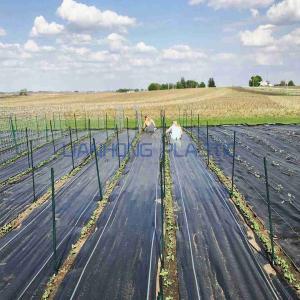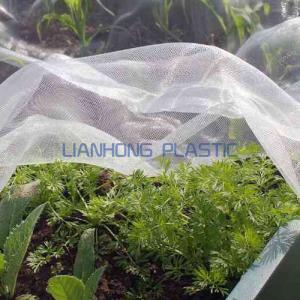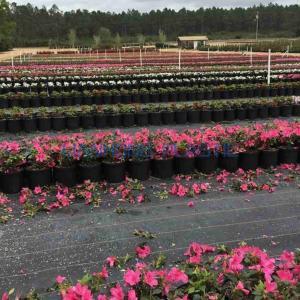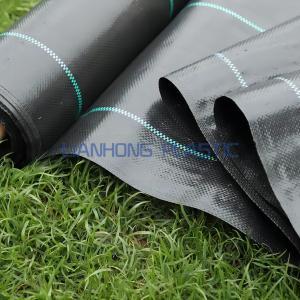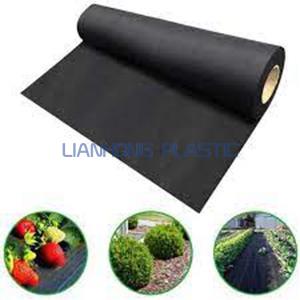How to Remove Landscape Fabric?
Ready to remove landscape fabric? Here’s what you need to know:
What is landscape fabric?
If you just moved into your brand new home, you might be wondering why the previous owners buried plastic in the front yard. Most likely what you found is landscape fabric.
Landscape fabric is a geotextile that prevents weeds from growing in planting beds, around trees, or in river rock ground covers. It’s typically made of linen, polypropylene, polyester, or recycled material.
Not only does the fabric block weed growth, but it also:
Prevents rock mulches from sinking into the soil
Controls erosion
Reduces chemical herbicide use
Stabilizes soil temperature
Retains soil moisture by reducing evaporation
Many landscape fabrics are porous enough to allow water and oxygen access to the soil. Some landscape fabric types are more porous than others, so it’s essential to research which type you need for your outdoor project.
Landscape fabric has many names, including:
Landscape cloth
Freeze Protection|Garden Fabric
Landscaping fabric
Weed Barrier fabric
How to remove landscape fabric
This removal project’s difficulty level will vary depending on how many weeds and plants have rooted themselves in the fabric and the condition of the fabric. Removing your landscape fabric might be as easy as pie, time-consuming, or require the skills of a professional.
Here’s what you’ll need:
Garden rake
Trash bag (for the old landscape fabric)
Sharp utility knife or scissors
Shovel or garden hoe
Step 1: Determine where the landscape fabric is buried. You don’t want to go digging where there’s no fabric. In most cases, landscape fabric is buried within a planting bed’s borders.
Step 2: Rake a small section of old mulch to reveal the landscape fabric. If the mulch reveals a layer of soil, remove the soil with a shovel or garden hoe.
Step 3: Slice the exposed landscape fabric with your utility knife. Shake the soil and debris off the landscape fabric for easier disposal. Place the cut material in a trash bag or designated area.
Step 4: Continue to work in small sections. Remove mulch and soil to expose the fabric, and then cut the fabric with your utility knife. Repeat this step as often as necessary.
Step 5: Be careful around your plants. If their roots have grown into the landscape fabric, gently cut away at the landscape fabric.
Step 6: Once you’ve removed all the fabric from the planting bed, it’s time to throw it away.
Why should you remove landscape fabric?
Landscape fabric removal is necessary when you need to replace the fabric with new fabric or you’ve decided the Weed Barrier is not suitable for your garden bed.
Homeowners new to landscape fabric often believe the weed barrier will benefit their garden for years to come. After all, the material isn’t going to degrade overnight, right? Landscape fabric might last for many years underground, but its benefits begin to decline after one to two years. If you don’t replace your landscape fabric, it could prove detrimental to your plants.
Not only do its benefits decline over time, but landscape fabric also can affect your garden’s health right from the start. Here are some reasons why many gardeners choose to remove landscape fabric without replacing it:
Replacing the fabric every one to two years can prove burdensome.
As the fabric’s benefits decline, it begins to clog and prevent water and air from accessing plant roots.
Freeze Protection|Garden Fabric is not a 100% reliable weed control solution. Weed seeds from neighboring lawns and gardens can accumulate above the landscape fabric and take root.
Weeds sprouting on top of the fabric are tough to remove because their roots have intertwined with the fabric.
Plant roots have the potential to grow into the fabric, making fabric removal difficult.
Landscape fabric damages soil fertility.
Landscape fabric kills the soil by driving out earthworms, microbes, and other beneficial insects that keep the soil healthy.
Exposed landscape fabric can be unattractive in the landscape.
Garden fabric is an inorganic mulch, which means it adds no nutritional value to the soil.
Landscape cloth prevents organic matter from accessing the soil.
FAQ about landscape fabric
1. How do I install landscape fabric?
Installing landscape fabric is an easy task, but it does require some time in the sun. If you’re concerned about harming your plants during installation, you can always hire a professional for help.
Check out our landscape fabric installation guide if you’re eager to install landscape fabric for your flower beds, vegetable garden, rock ground covers, or around your trees.
2. What are the different types of landscape fabric?
Installing the wrong kind of landscape fabric can prove detrimental to your plants. The landscape fabric that’s best underneath river rock walkways isn’t the kind of fabric you want to install in your vegetable garden.
These are the four different types of landscape fabric:
—Woven: Best for trees and shrubs. You also can use it in perennial gardens where plants aren’t changed often.
—Non-woven: Best for gravel or river rock walkways.
—Spun: Best for gravel or river rock walkways and behind retaining walls.
—Perforated: Best for flower beds where you frequently add new plants and vegetable gardens.
3. What are some landscape fabric alternatives?
If you don’t want to use landscape fabric in your garden or flower beds, there are plenty of alternatives, including:
—Wood chips
—Bark mulches
—Pine needles
—Shredded leaves
—Grass clippings
—Compost
—Newspaper
—Cardboard
—Burlap
Hire a pro when landscape fabric doesn’t budge
When weed roots have overrun your landscape fabric and practically glued it to the ground, you may need a professional’s help. Removing landscape fabric isn’t always easy, especially if it’s been left alone for years.
And if your valuable plants have grown their roots into the fabric, that only makes the job harder.
Call up a local lawn care professional to remove the fabric for you so that you don’t risk damaging your garden in the process.
